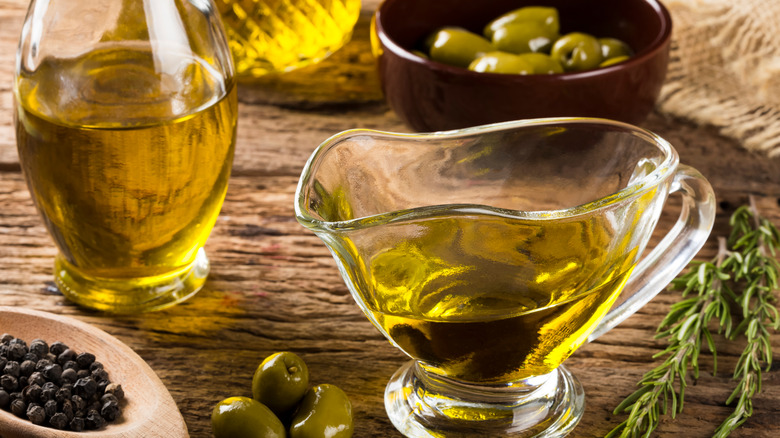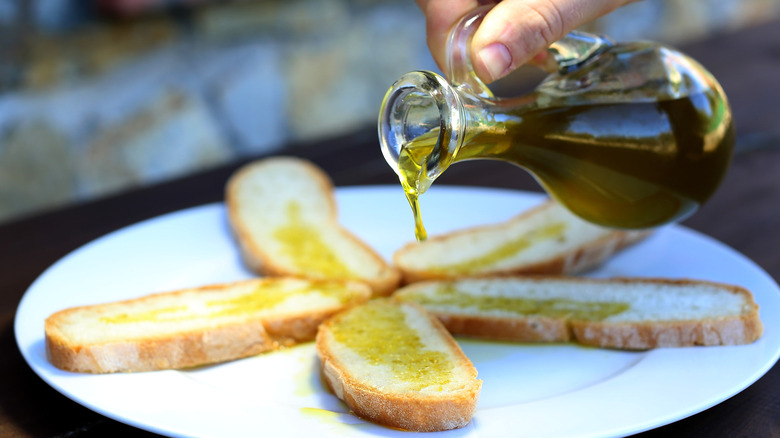Stop Believing This Common Olive Oil Myth
Olive oil is the type of universal ingredient that you can find in many kitchens across the globe. It's loved for its signature, light olive flavor, smooth texture, and versatility in cooking. It can be used in a variety of ways, as-is or cooked with heat and other elements. But olive oil has also been around for quite some time, and so has developed many myths and urban legends about what it can or cannot do. We're here to set the record straight on this one particular myth about olive oil that you can stop believing.
The urban legend we specifically want to tackle — so we can save you from throwing away perfectly good olive oil — is about cloudy olive oil. The myth says that "cloudy extra virgin olive oil is a sign of rancidity," according to the Olive Wellness Institute. You'll be happy to know this is not true at all, and in fact may be just the opposite. So don't get rid of your oil just yet.
What does cloudy olive oil mean?
The Olive Wellness Institute assures us that cloudy olive oil doesn't mean it's gone bad, but can actually be a sign that the oil is extra fresh. The outlet notes that "the freshly squeezed juice of an olive can sometimes contain a small amount of natural moisture," so it's definitely nothing to worry about. The cloudiness is probably due to the sediment remaining from the olive juicing process that simply hasn't settled to the bottom of its initial tank. Temperature may also play a role in cloudiness (whether olive oil is stored at a cold or room temperature may impact the settling of sediment).
So in short, cloudy olive oil is definitely a keeper and not a concern. And there are definitely other ways to ensure your olive oil is fresh, aside from a cursory glance for cloudiness. Try using your senses to figure out the oil's freshness — including smelling its aroma, sampling a taste, or even scanning for texture.

